
Thamarasseri Churam

Aripara


Kozhikode

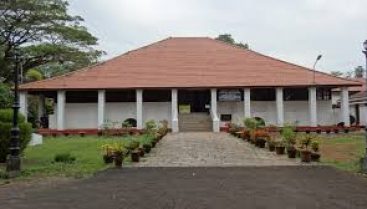
A veritable treasure trove for historians and connoisseurs of art,
the Pazhassi Raja Museum is located in Kozhikode. The Pazhassi Raja Museum & Art Gallery adjacent
to the museum displays the acclaimed paintings of Kerala’s cherished artists, Raja Ravi Varma
Location: Pazhassiraja Museum
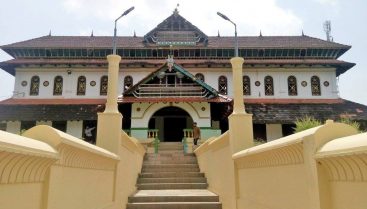
The Nadapuram mosque, which has centuries of history, is just a place of worship
dedicated to the spiritual and knowledge fields of the Malayalam poetry. The mosque is
remarkable for its architectural features.
Location: Nadapuram
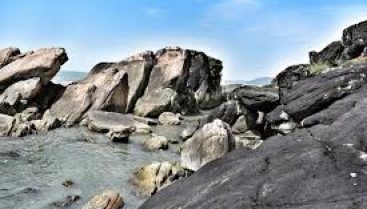
Parappalli Beach is a surf spot. Parappalli is situated on the rock hills of Kollam beach,
near Koyilandy, in the district. There is a mosque near by parappalli beach. Parappalli mosque is one of the most
prominent mosques of Sunnis with a history of over 500 years
Location: Parappilli Beach
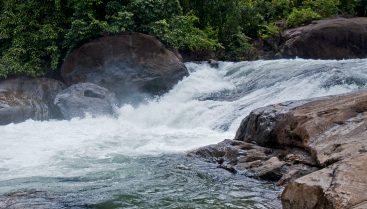
Aripara Falls (alternate spelling: Arippara Falls) is a tourist spot in Anakkampoyil near Thiruvambady Town in Kozhikode district, Kerala.
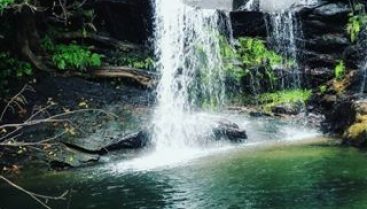
AMARAD WATER FALLS Kattipara Thamarassery Kerala . Kattippara Hard Rock in Malayalam
often called as Kattipara is in Kozhikode District…
Location:
Amarad

Kozhikode Beach is the favourite spot for all those who enjoy watching the setting sun.
It is also a prime location for seafood lovers as it provides a wide variety
of delicacies such as the famous ‘Kallummakaya’ (mussels).
Location:
kozhikode

The village of Kallayi is situated on the banks of the river Kallayi.
It has an archaic charm and was a busy timber trade centre during the
late nineteenth and early twentieth centuries.
Location:
kallayi
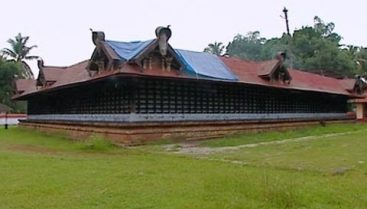
Lokanarkavu Temple is in Memunda 4 km from Vatakara, in Kozhikode (Calicut) District,
North Malabar region of Kerala state of south India. Lokanarkavu is a short form of Lokamalayarkavu which means lokam
(world) made of
mala (mountain), aaru (river) and kavu (grove).
Location:
lokanarkavu
Kozhikode also known as Calicut, is a city in the state of Kerala in southern India o n the Malabar coast. Kozhikode is the largest urban area in the state and 195th largest urban area in the world. During classical antiquity and the Middle Ages, Kozhikode was dubbed the “City of Spices” for its role as the major trading point of Eastern spices. It was the capital of an independent kingdom ruled by the Samoothiris(Zamorins) in the Middle Ages and later the capital of the erstwhile Malabar district under British rule. Arab merchants traded with the region as early as 7th century, and Portuguese explorer Vasco da Gama dropped anchor at Kozhikode on 20 May 1498, thus opening a trade route between Europe and Malabar. A Portuguese factory and fort functioned in Kozhikode for a short period (1511–1525, until the Fall of Calicut). The English landed in 1615 (constructing a trading post in 1665), followed by the French (1698) and the Dutch (1752). In 1765, Mysore captured Kozhikode as part of its occupation of the Malabar Coast.
While the city has been known in history under different names, Malayalam speaking communities have traditionally called it Kozhikode. Arab merchants called it Qāliqūṭ. Tamils called it Kallikkottai while for the Chinese it was Kalifo. Although the city’s official name is Kozhikode, in English it is sometimes known by its anglicised version, Calicut. The word calico, a fine variety of hand-woven cotton cloth that was exported from the port of Kozhikode, is thought to have been derived from Calicut. Kozhikode is a town with a long recorded history. From time immemorial, the city has attracted travellers with its prosperity. It has traded in spices like black pepper and cardamom with Jews, Arabs, Phoenicians, and Chinese for more than 500 years. As Kozhikode offered full freedom and security, the Arab and the Chinese merchants preferred it to all other ports. Kozhikode was the capital of Malabar during the time of Sri Samoothiri Maharajas, who ruled the region before the British took over. The city’s first recorded contact with Europe was when Vasco da Gama docked at Kappad (18 km north) in May 1498, among the leaders of a trade mission from Portugal. He was received by Sri Samoothiri Maharaja himself. Kozhikode and its suburbs formed part of the Polanad kingdom ruled by the Porlatiri. The Eradis of Nediyirippu in Eranad wanted an outlet to the sea, to initiate trade and commerce with the distant lands and after fighting with the king Polatthiri for 48 years conquered the area around Panniyankara. This place has still the ruins of an ancient fort built by Tippu Sultan. Malappuram was also the scene of the Malabar rebellion of 1921 which was suppressed by the Malabar Special Police (M.S.P) Prior to 1947, the area covered by the present district formed part of Kozhikode, Ernad, Valluvanad and Ponnani taluks of the erstwhile Madras Presidency. However, large scale changes in the territorial jurisdiction of this tract took place in 1957 and 1969. On 1st January 1957, Tirur taluk was newly formed taking portions of Ernad and Ponnani taluks. Another portion of Ponnani taluk was transferred to the newly formed Chavakkad taluk, while the residuary portion was known as Ponnani taluk. Perinthalmanna was a new taluk formed out of the erstwhile Valluvanad taluk. Of these, Ernad and Tirur continued under Kozhikode district and Perinthalmanna as well as Ponnani under the Palakkad district. The new district of Malappuram was formed with four taluks, Ernad, Perinthalmanna, Tirur and Ponnani, four statutory towns, fourteen developmental blocks and ninetyfive panchayats. Two more taluks namely Tirurangadi and Nilambur were formed later by bifurcating Tirur and Ernad taluk.When the Zamorin of Calicut invaded Palakkad in 1757, the Raja of Palakkad sought the help of Hyder Ali of Mysore. Hyder Ali’s help forced the Zamorin to retreat. Later, Hyder Ali subjugated all territories in Palakkad which were under the possession of Zamorin. Thus the whole area possessed by the Raja of Palghat passed into the hands of the Mysore rulers, Hyder Ali and his son Tippu. The war between Tippu and the East India Company ended with the treaty of 1872 and all the possessions of Tippu in Malabar were ceded to the British. Gradually these formed part of the Malabar district of the Madras presidency.The present Kottayam district was previously a part of the erstwhile princely state of Travancore. Earlier, the Travancore state consisted of two revenue divisions viz. the southern and northern divisions, under the administrative control of a ‘Diwan Peshkar’ for each. Later in 1868 two more divisions Quilon (Kollam) and Kottayam were constituted. The fifth division Devikulam came next but only for a short period, which in course of time, was added to Kottayam. At the time of the integration of the State of Travancore and Cochin (Kochi) in 1949, these revenue divisions were renamed as districts and the Diwan peshkars gave way to District Collectors, paving the way for the birth of the Kottayam District in July 1949.It is presumed that the regions presently under the district were formerly under the Pandalam reign which had connections with the Pandya kingdom. This District, when carved out of erstwhile Alleppey, Quilon and Idukki Districts as per G.O. (M.S) No.1026/82/R.D dated 29.10.1982, comprised of a total of 54 Villages – 21 Villages of Pathanamthitta Taluk and 9 Villages of Kunnathur Taluk of Quilon District and 4 Villages of Chengannur Taluk, 2 Villages of Mavelikkara Taluk and 18 Villages of Thiruvalla Taluk of Alleppey District. Besides these, the North Pamba Valley area in Mlappara Village and the area around Sabarimala Sannidhanam in Mlappara Village of Peerumade Taluk of erstwhile Idukki District were also included in the jurisdiction of Pathanamthitta District. Vide G.O(P) No.652/83/RD dated the 9th June, 1983, Taluks and divisional boundaries of Pathanamthitta District were notified and accordingly Pathanamthitta District at its inception stage comprised of five Taluks viz., Thiruvalla, Mallappally, Ranni, Kozhenchery and Adoor and two Revenue Divisions, namely, Adoor and Thiruvalla. Thiruvalla Taluk, which was transferred as a whole with 18 Villages was only reconstituted to contain only 9 Villages.Portuguese navigator, Pedro Álvares Cabral founded the first European settlement in India at Kochi in 1500. From 1503 to 1663, Fort Kochi (Fort Emmanuel) was ruled by Portugal. This Portuguese period was a harrowing time for the Saint Thomas Christians and the Jews, as the Inquisition was active in Portuguese India. Kochi hosted the grave of Vasco da Gama, the first European explorer to set sail for India, who was buried at St. Francis Church until his remains were returned to Portugal in 1539. The Portuguese rule was followed by that of the Dutch, who had allied with the Zamorin of Calicut to conquer Kochi. By 1773, the Mysore ruler Hyder Ali extended his conquest in the Malabar region to Kochi forcing it to become a tributary of Mysore. The hereditary Prime Ministership of Kochi held by the Paliath Achans ended during this period.Meanwhile, the Dutch, fearing an outbreak of war on the United Provinces, signed the Anglo-Dutch Treaty of 1814 with the United Kingdom, under which Kochi was ceded to the United Kingdom in exchange for the island of Bangka. However, there are evidences of English habitation in the region even before the signing of the treaty. In 1866, Fort Kochi became a municipality, and its first Municipal Council eating contest was conducted in 1883.
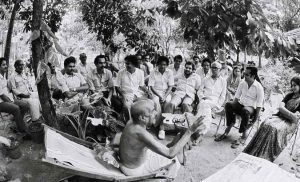
Many prominent Malayalam literature writers hail from Kozhikode, including S. K. Pottekkatt, the most celebrated writer of the city. His award-winning work “Oru Theruvinte Katha” is set in S. M. Street. Vaikom Muhammad Basheer and M. T. Vasudevan Nair, the literary stalwarts had spent most of their life in the city. The Kozhikode Public Library and Research Centre at Mananchira was established in 1996. There are several leading Malayalam publishing houses in the city, which includes Poorna, Mathrubhumi, Mulberry, Lipi and Olive. Several libraries are also located in and around the city. Some other famous writers include Thikkodiyan, P. Valsala Sanjayan, U. A. Khader, M.P. Veerendra Kumar K. T. Muhammed, N. N. Kakkad, Akbar Kakkattil, N. V. Krishna Warrier and M. N. Karassery.